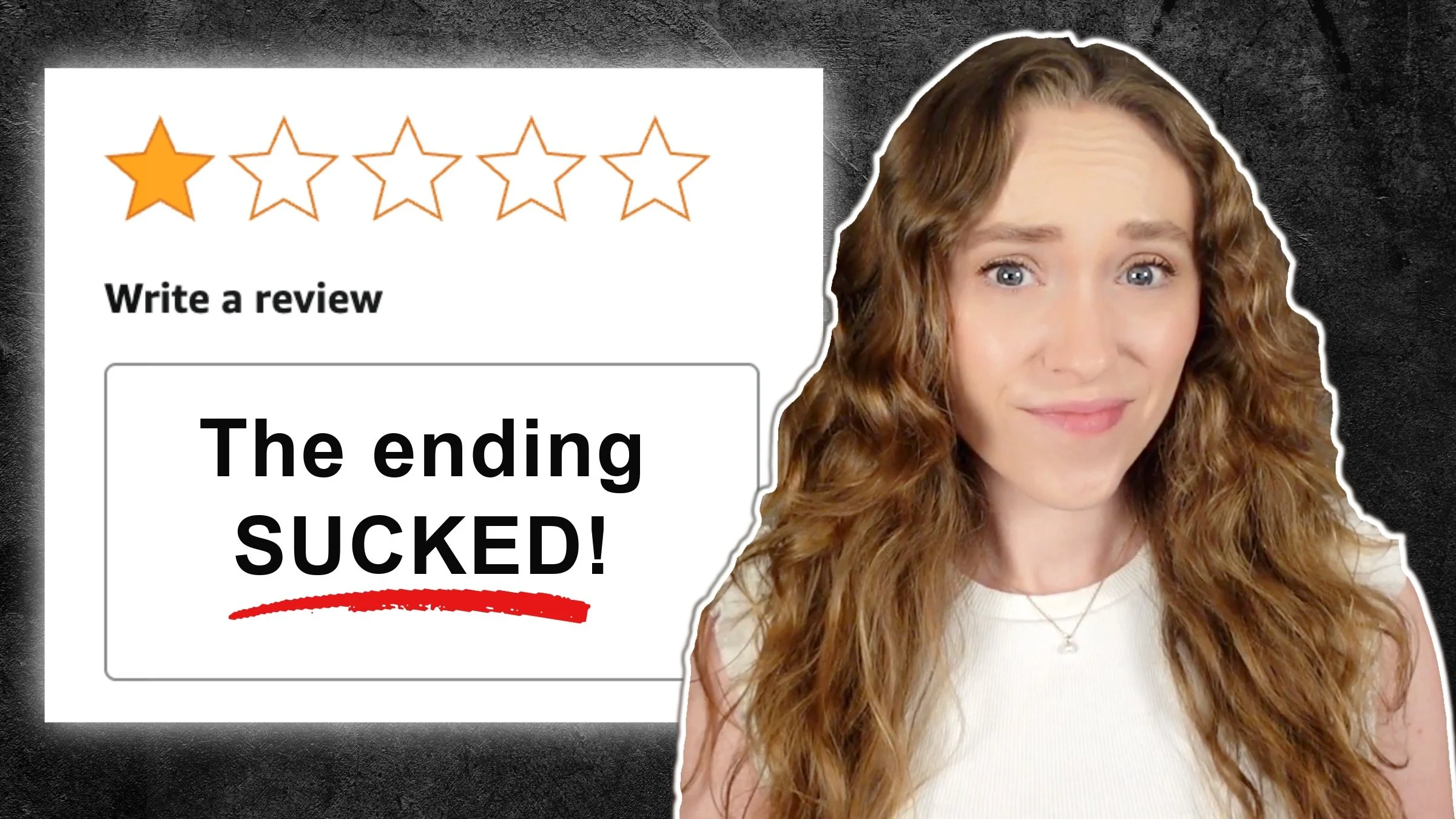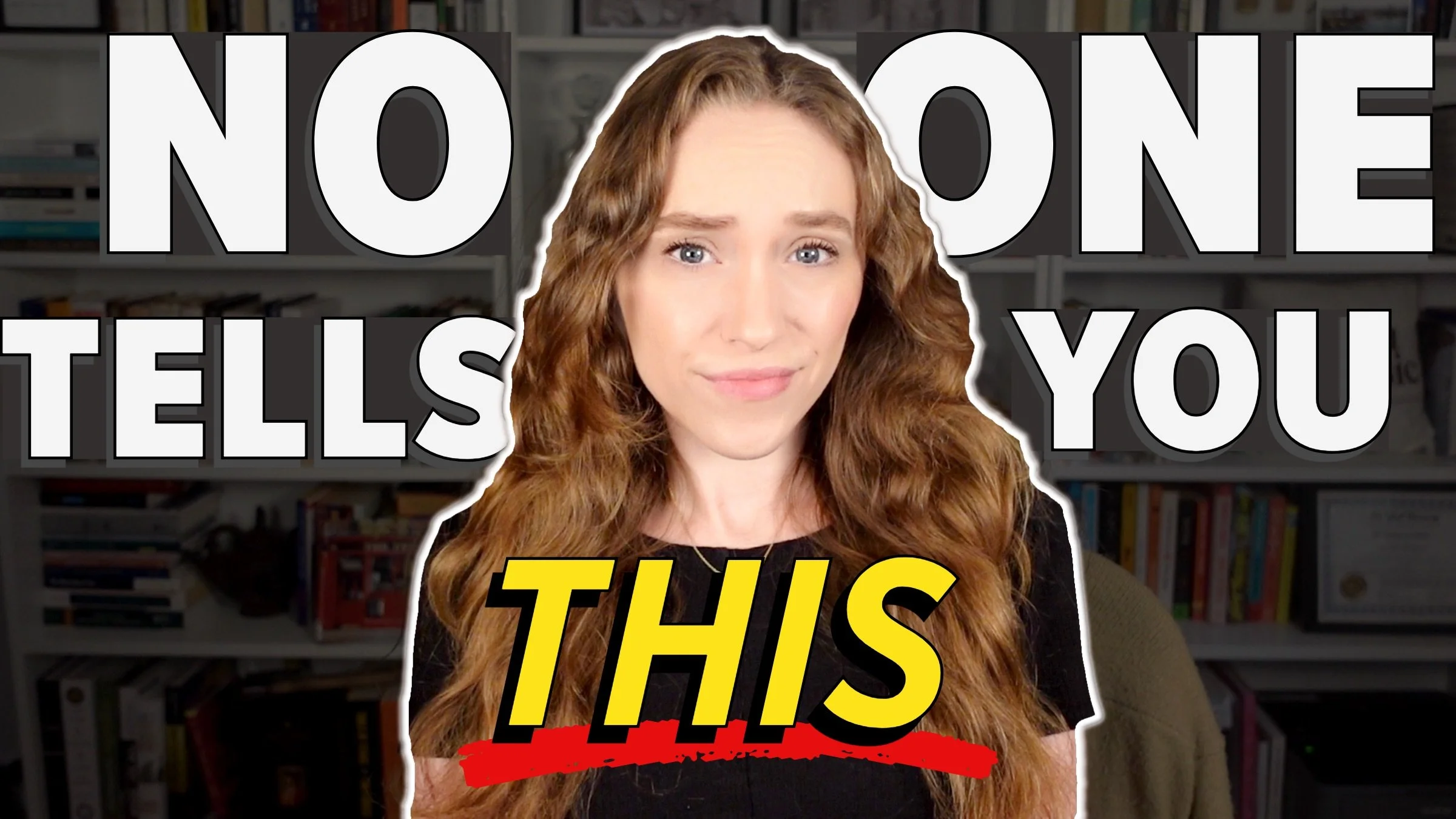Common Writing Mistakes to Spot When Self Editing
HIT PLAY OR READ THE POST BELOW:
Editing your own work can feel as painful as pulling teeth. But the reality of writing is that self editing is an essential component of the process. Plus, if you want to strengthen your book for publication, it is absolutely imperative.
Keep in mind that self editing does not replace the need for trusted beta readers or even a professional editor to help you get that third party perspective and catch things that you can't see in your own work. But on top of external editorial feedback, there are some easy, common writing mistakes you can catch in your own work.
I am approaching these tips from the perspective of editing a novel, but these tips can apply to other types of writing projects as well.
Here are some mistakes that you can catch while self editing your own manuscript.
1. Switching Tenses
The first common writing mistake is switching tenses, which is when within a scene, paragraph, or page, the text moves between present and past tense in a way that doesn't register properly. You can spot this in your own draft by looking closely at each verb used in each scene.
It is quite easy to switch tenses without thinking, as it may sound correct in your head. But, it will be obvious to a reader or editor trying to make their way across the page. There’s a high chance they’ll be confused, as they won't understand what is happening now and what happened in the past.
Here’s an example:
When I opened the envelope, a mix of excitement and relief washed over me. Inside was a check for $10,000.
“Thanks so much. I don't even know what to say,” I say to mom over the phone.
“It's the least I could do after all your help with the house renovation,” she replies. “I know this will help you finish your novel.”
I started to cry out of joy as I pulled up the website for the writing retreat.
As you were reading, were the tense changes noticeable? This is one example of a really sneaky tense shift within a scene. The passage starts with the narrator having “opened” the envelope in the past tense and then feeling relief “washed” over them in the past tense. However, when going on to the dialogue with the mom, there are the present tense verbs “says” and “replies” instead of “said” and “replied.” And finally, in the last bit of narration the narrator “started to cry,” back in the past tense.
So with this example, the fix would be to change those two middle verbs to the past tense, so that all-in-all the scene is cohesive.
2. Inconsistent Point of View
The second common writing mistake is a big one for novels: inconsistent point of view. The best practice is for the entire book to be in either first person or in third person. I say first or third person perspective because I usually recommend against writing a novel in second person. It is really tricky to execute correctly and can rub the reader the wrong way.
There are some novels that switch between first and third person, but it’s hard to pull off. I don't typically recommend taking that approach, particularly if you are a new writer and this is a first book project for you.
Now, when talking about an inconsistent point of view, it's pretty obvious to see when the narrative is switching between first or third person. The trickier mistake is when writing in different kinds of third person perspective.
There are two main types of third person perspective, omniscient third person and close third person. Omniscient third person is where the narrator knows everything, from each character’s actions to the facts and history of the setting. The narrator sees everything, moves between the characters, and has a holistic view of a scene. On the other hand, a close third-person perspective means the reader follows only one character, seeing only their thoughts and knowledge. Thus, the reader stays pretty laser-focused.
When I see inconsistent perspectives in novels, it’s usually when writers are switching between omniscient and close third person without realizing it.
Here’s an example:
Julie, Todd, and Amy agreed that a scoop or two of ice cream was the perfect way to end the day. They drove over to Joe's dairy stand and placed their orders at the counter.
Todd noted Amy's pick, cookie dough. He'd get a tub of that to keep in his freezer for whenever she came over, he thought. They were still in the honeymoon phase of their relationship where both parties aimed to please.
Julie drove them back to the apartment. She wondered if she'd ever find a partner like Amy had found in Todd.
Were you able to note any point of view switches? Here’s the breakdown of what just happened. The first paragraph is in omniscient third person. The example talks about Julie, Todd, and Amy as a group, and it follows them all together.
However, when we move into the second paragraph, we are seeing what Todd is doing internally. He notes Amy's ice cream choice and thinks about getting a tub specifically for whenever she comes over. That is something that the reader can't see externally from the omniscient point of view that’s been established in the first paragraph. This paragraph narrows in on Todd specifically.
Now, there isn't necessarily a problem with the passage yet. Where it gets tricky is the third paragraph, where the reader can now see inside Julie's head as well. Julie wonders if she'll ever find a partner like Amy had found in Todd. So, not only does the reader see the inside of Todd’s head, but also Julie's head. So the narrative is “head hopping” between multiple characters’ perspectives, instead of staying consistent with that bird’s-eye view perspective via omniscient narration or sticking to one character in close third person narration.
Of course, switching between multiple perspectives can and has been done successfully. But, to keep things consistent and simple, I recommend sticking with one close third person perspective or maintaining an equal, omniscient third person perspective. Getting inside multiple characters' heads in the third person perspective can disorient the reader, making them spend more time figuring out who the protagonist is rather than being immersed in your story.
3. Pet Phrases
The third common writing mistake is one unique to you: overusing pet phrases. A pet phrase is a unique and descriptive phrase that you, as a writer, love to use.
You might not notice on the first draft how many times you're using the same description. It likely registers naturally in your head. However, because it is a unique and memorable description, the reader is going to be able to pick up on it and notice it being used over and over.
This often shows up in a manuscript when you describe a character, object, or place in a certain way. For example, you might say that a character has “emerald green” eyes, and then you keep referring to them using the word “emerald.” Or, you might say that the protagonist’s home has a musky scent and then keep referring to anything related to them as having a musky smell.
Here’s an example:
Roger and Susan loved spending their afternoons walking their caramel-colored lab Waffle.
One day they took them to the local dog park where he always seemed to make immediate friends. As the dogs ran and played, Waffle’s caramel fur blew in the wind.
“I love seeing him so happy,” Susan said to Rod.
When the couple decided it was time to go home, Roger called Waffle’s name and his golden brown face turned to them.
This is a pretty heavy-handed example, but imagine this as a condensed version of what could manifest in a novel. The first time Waffle is introduced, he is described as a caramel-colored lab. This is a unique descriptor that helps the reader picture what Waffle looks like.
But, as it gets used over and over, it becomes repetitive. In the next paragraph, Waffle is again described as having caramel fur. It’s a detail that’s not necessary to include because the reader already is picturing Waffle in that way. And in the final sentence, Waffle is again referred to with a “golden brown face.” At this point, the reader might be wondering what plot significance Waffle’s fur color might have, as it’s been brought up and emphasized so many times.
Luckily with pet phrases, there is an easy way to check how many times you're using them. If you suspect that you're using a descriptor multiple times, or if a beta reader or editor points out some overused phrases, all you have to do is use the search or find function on your writing software. It will show how many times you use the phrase “caramel,” for instance. It also shows you where it’s being used. You might be surprised by how many times you realize you use your pet phrases!
When dealing with pet phrases, you have two main choices. You can use a synonym to slightly adjust what is being said, or you can just remove the pet phrase entirely. If the reader already knows what color eyes a character has, there isn't a need to bring it up again unless their eye color is a specific component of a scene.
4. Improper Punctuation
The next common writing mistake I want to walk you through is improper punctuation. When I'm editing, my eyes will often catch on exclamation points and semicolons because these are punctuation marks that should be used sparingly. Since these are more unique, a reader will notice when they are used and register that different flow of prose. So I recommend that you use exclamation points and semicolons sparingly.
Another area that should be looked at closely is commas. Specifically, having too many commas in a sentence indicates that you should break the sentence up into multiple sentences so it will flow better.
Here’s an example:
As soon as I reached the cabin; I knew something was wrong. The door was partially open and there were a set of men's tennis shoes, sitting on the doorstep. Who could possibly be here?! I asked myself.
My heart started racing, my chest became tight, I felt paralyzed and terrified all at once; I didn't have any means of defending myself against an intruder!
There are a few blatant errors here, as well as some more subjective edits that I would personally make to help this passage flow a little bit smoother. In the first sentence, the semicolon should be a comma, because a semicolon is connecting two distinct and complete sentences that can stand on their own individually. However, in this case, the first clause of the sentence is connected to the second clause and they're dependent on each other. So, grammatically, the semicolon should be a comma.
The second grammatical mistake is the comma in the second paragraph, just before “sitting on the door.” It should be removed, as it’s not necessary. And for the last sentence in the paragraph, the extra exclamation points and question marks should be removed, in my opinion. This is because these extraneous bits of punctuation feel melodramatic and unnecessary. The reader is already adding that tension and suspense to the phrase since they already understand what's at stake in the scene.
Looking at the second paragraph, it’s just one sentence connected by commas and a semicolon. However, I feel it would flow better if we break it up into separate sentences. So for the first sentence, we can eliminate that first comma and connect those two phrases, since those two things are happening simultaneously.
Making the next sentence a standalone will let the reader sit with that description for a minute. Finally, the concluding thought can stand on its own and without an exclamation point as well.
Again, the reader can already feel the intensity of the scene.
Revised, the scene would look like this:
As soon as I reached the cabin, I knew something was wrong. The door was partially open, and there were a set of men's tennis shoes sitting on the doorstep. Who could possibly be here? I asked myself.
My heart started racing, and my chest became tight. I felt paralyzed and terrified all at once. I didn't have any means of defending myself against an intruder.
Now the scene reads cleaner, without punctuation distracting from the flow of action.
When going through your own manuscript, make sure that you're double-checking all of those punctuations with a fine-toothed comb. You can use the search function again to look for exclamation points, semicolons, and any other uncommon punctuation marks. That way you can pinpoint exactly how often you’re using them, and where to cut them out.
5. Lengthy Paragraphs
The final mistake to catch in your own writing is lengthy paragraphs. This can be figured out by scanning through your manuscript. By zooming out on your writing software, you can quickly scan through the pages. If there is a paragraph taking up more than half a page, you should look at that paragraph in more detail to see if there's any place where there is a natural break that you could break it up into multiple paragraphs.
So the reason this is really important is because the reader will appreciate a visual break. Regardless if they are using an e-reader or a physical book, having shorter length paragraphs will help your readers follow the flow of the scene better, move their eye across the page easier, and improve overall reading comprehension.
Additionally, each line of dialogue needs to go on its own paragraph line. That's really important, especially if there are multiple speakers in a conversation. Each spoken quote needs to have its own line so that the reader can make sense of who's saying what.
Here’s an example:
It was New Year's Eve, and we'd been invited to three different parties, but we wanted to take it easy. We stocked up on silly party hats and cheap champagne and curated a playlist for the night. It was the perfect plan, and by ten, we were tipsily playing cards and giggling about nothing. “I'm so glad it's just us tonight,” Joe said, and I nodded. It wasn't until the people on the TV in Times Square started counting down that we realized we'd fallen asleep on the couch in a heap. We woke up just in time to kiss at the strike of midnight.
This is a nice scene covering quite a stretch of time. It covers the entirety of the evening of New Year's Eve and even potentially some of New Year’s Day itself at the beginning, so there's no need for it to be in one block paragraph. It would look a lot cleaner and easier to read if we break it up.
Here is what the revision would look like:
It was New Year's Eve, and we'd been invited to no short of three different parties, but we wanted to take it easy. We stocked up on silly party hats and cheap champagne and curated a playlist for the night. It was the perfect plan, and by ten, we were tipsily playing cards and giggling about nothing.
“I'm so glad it's just us tonight,” Joe said, and I nodded.
It wasn't until the people on the TV in Times Square started counting down that we realized we'd fallen asleep on the couch in a heap. We woke up just in time to kiss at the strike of midnight.
I kept the majority of the text in the first paragraph, up until the point where Joe says “‘I’m so glad it’s just us tonight.’”
Immediately after the line of dialogue, I broke the paragraph too, which is standard formatting. Also, there's a break in time. There is clearly some type of pause between Joe speaking and the two characters waking up. Visually, this just looks better as well and it will make it more appealing for the reader as they are going down the page.
Of course, sometimes the action of specific scenes will better suit longer paragraphs. But if you find that you often compact your story into large blocks of text, breaking it up will help the story flow better overall.
These are some simple mistakes you can look for during the self editing process. I know it can be grueling. As someone who always hates to edit my own writing, I am there with you. But these are small, common writing mistakes that you can easily fix yourself and they don't take a ton of thought and time.
So I hope that you're able to open up your manuscript draft and apply some of these tips and tricks to your own story when you're feeling good and ready.
Thanks so much for reading and happy editing!






